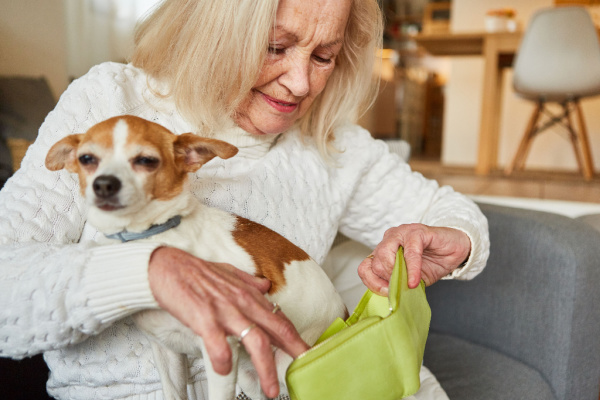Everyone loves their pets, especially with so many who added a furry family member during the pandemic. But unfortunately, “pet parenthood” keeps getting more expensive, even as other prices drop. Many families are finding their pets are putting a big strain on their budgets.
A survey by the pet care site Rover has found that 90 percent of pet parents are seeing a rise in costs this year. While prices this fall are dropping for electronics, clothing, and toys, pet products are up 12.6 percent year-over-year, more than the Consumer Price Index.
To save money, people will often turn from the higher priced brands with better ingredients to cheaper ones with more fillers. However, experts say that could backfire because your dog could end up feeling hungrier, wanting more, and even developing GI issues that mean a pricey trip to the vet.
Other consumers might go for the smaller bag to save money at the store, but experts warn that strategy could backfire down the road. They say shoppers should look at the price per serving, and in that case, a larger bag makes more financial sense, even if it is costlier at checkout. And remember, your bag of dog food has a shelf life of a year, so you’ve got time.
Consumers might want to do some comparison shopping between stores and chains. If your brand is pricey at the supermarket or pet store, you might want to investigate what the same bag costs at places like Target and Costco.
Still, when it comes to spending, pet owners view their animals as family. Rover trend expert Kate Jaffe says in the survey, “98 percent of them told us that their dog has provided them comfort during these difficult economic times.”
She says pet owners looking to save should try a discount retailer instead of big-box pet chains or grocery stores. “That way, they can also get some savings on those everyday essentials like toys or treats,” she said.
If you absolutely cannot afford pet food, such as after a job loss or family emergency, check with local shelters and veterinarian offices that may be able to put you in touch with a pet food bank. The Humane Society has a list of programs that may help you find free or reduced-price pet food.
And if you’re considering adding another pet to the family, Kate Jeffe says know the upfront costs, which include purchase/adoption fees, vaccinations, and spaying or neutering.
- A dog can cost $900 to nearly $4,500, depending on the breed.
- A cat can cost $700 to $3,000.
So talk with your pet shop and veterinarian, check out big box stores and don’t forget to comparison shop online.
—
Photo Credit: Robert Kneschke / Shutterstock.com
